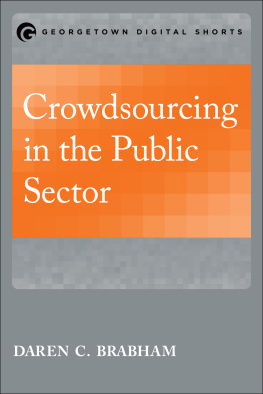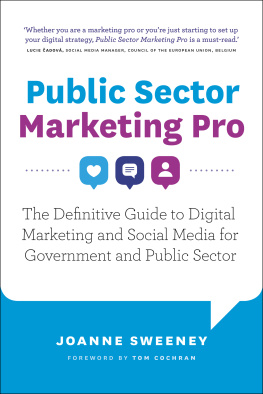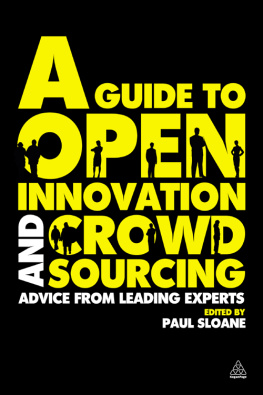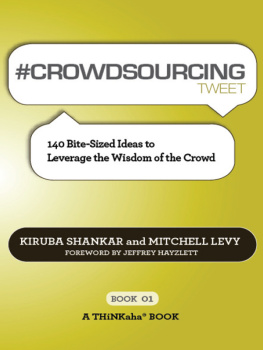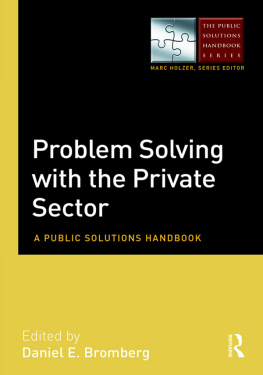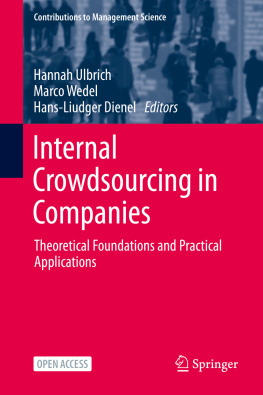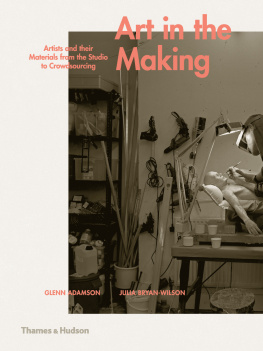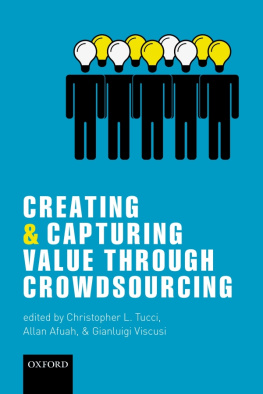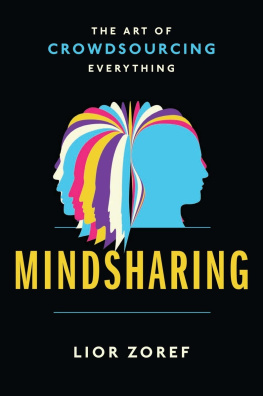2015 Georgetown University Press. All rights reserved. No part of this book may be reproduced or utilized in any form or by any means, electronic or mechanical, including photocopying and recording, or by any information storage and retrieval system, without permission in writing from the publisher.
Join our mailing list and get updates on new releases and special offers from Georgetown University Press.
Public Management and Change Series
Beryl A. Radin, Series Editor
EDITORIAL BOARD
Robert Agranoff
Michael Barzelay
Ann OM. Bowman
H. George Frederickson
William Gormley
Rosemary OLeary
Norma Riccucci
David H. Rosenbloom
TITLES IN THE SERIES
Challenging the Performance Movement: Accountability, Complexity, and Democratic Values
Beryl A. Radin
Charitable Choice at Work: Evaluating Faith-Based Job Programs in the States
Sheila Suess Kennedy and Wolfgang Bielefeld
Chinas Sent-Down Generation: Public Administration and the Legacies of Maos Rustication Program
Helena K. Rene
Collaborating to Manage: A Primer for the Public Sector
Robert Agranoff
The Collaborative Public Manager: New Ideas for the Twenty-first Century
Rosemary OLeary and Lisa Blomgren Bingham, Editors
The Dynamics of Performance Management: Constructing Information and Reform
Donald P. Moynihan
Federal Management Reform in a World of Contradictions
Beryl A. Radin
Federal Service and the Constitution: The Development of the Public Employment Relationship, Second Edition
David H. Rosenbloom
The Future of Public Administration around the World: The Minnowbrook Perspective
Rosemary OLeary, David Van Slyke, and Soonhee Kim, Editors
The Greening of the U.S. Military: Environmental Policy, National Security, and Organizational Change
Robert F. Durant
High-Stakes Reform: The Politics of Educational Accountability
Kathryn A. McDermott
How Information Matters: Networks and Public Policy Innovation
Kathleen Hale
How Management Matters: Street-Level Bureaucrats and Welfare Reform
Norma M. Riccucci
Implementing Innovation: Fostering Enduring Change in Environmental and Natural Resource Governance
Toddi A. Steelman
Managing Disasters through Public-Private Partnerships
Ami J. Abou-bakr
Managing within Networks: Adding Value to Public Organizations
Robert Agranoff
Measuring the Performance of the Hollow State
David G. Frederickson and H. George Frederickson
Organizational Learning at NASA: The Challenger and Columbia Accidents
Julianne G. Mahler with Maureen Hogan Casamayou
Program Budgeting and the Performance Movement
William F. West
Public Administration: Traditions of Inquiry and Philosophies of Knowledge
Norma M. Riccucci
Public Values and Public Interest: Counterbalancing Economic Individualism
Barry Bozeman
The Responsible Contract Manager: Protecting the Public Interest in an Outsourced World
Steven Cohen and William Eimicke
Revisiting Waldos Administrative State: Constancy and Change in Public Administration
David H. Rosenbloom and Howard E. McCurdy, Editors
Work and the Welfare State: Street-Level Organizations and Workfare Politics
Evelyn Z. Brodkin and Gregory Marston, Editors
Preface
Just prior to my senior year of high school, I spent one week on the campus of the University of Texas at Austin engaged in a rigorous, hands-on simulation of Texas politics. The camp was Texas Boys State, a civic education and leadership program sponsored by the American Legion, a veterans organization. Since 1940 thousands of high school leaders in Texas and across the country have been able to run through this learn-by-doing experiment, condensing what is in real life about a two-year political process into just one week. Assigned to fictional cities and fictional political parties, students hear speeches from one another and mount campaigns to be elected as mayors, political party chairs, and all the way up to governor and other elected positions. Boys State teaches that involvement in the processes of politics and governance is the obligation of all citizens, and the work of public service is often difficult and messy but frequently satisfying.
I continue to learn from this experience, returning to Texas each year since to serve as a counselor for the program, mentoring tomorrows leaders. Young people are often dismissed as being distracted by technology and uninterested in politics and governance, but I get to see them light up with enthusiasm, think about big ideas, and experience the slow-moving gears of government as parts of a machine that can, in fact, be moved with enough determination and legwork. They get to see that their voice can actually matter in what shape their world takes.
Boys State is a microcosm that shows that the idealized notion of democratic engagement is not dead, even as partisan rancor today seems to turn off many citizens from the thought of engaging with government, while new technologies gobble up our attention night and day to where the thought of sitting through a lengthy city council meeting is dreadful. Indeed, direct citizen engagement in government affairs is truly exciting. Technology is helping citizens find new intimate connections to the public sector and allowing government to tap into the energy, intellect, and creativity of its citizens in ever more interesting and efficient ways.
In 2007 I connected this optimism for public engagement to a line of research about the role of crowdsourcing in the public sector, specifically the planning aspect. I teamed up with Thomas W. Sanchez and Keith Bartholomew to put this idea of crowdsourcing and planning into a grant proposal to the Federal Transit Administration. The Next Stop Design project funded by the grant and discussed at some length in this book was born. This moment focused my research program on the potential for crowdsourcing for the public good.
As crowdsourcing in public sector activities became normalized, frequent, and professionalized through associations and consultancies, it became clear that a set of unifying best practices and some practical advice for public managers that were informed by emerging empirical research was needed. The IBM Center for the Business of Government published some of these best practices in Using Crowdsourcing in Government. This book grows from that report and in addition injects a deeper level of theory and research from several disciplines, including communication, public administration, and business. This book also brings these best practices to life with insights from a dozen leaders using crowdsourcing in their work with various segments of the public sector.

